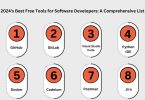The process of looking through, evaluating, and deriving conclusions from data while utilizing statistical methods and visual aids is known as data analysis. Gaining a thorough knowledge of data by spotting links, trends, and patterns is the aim of data analysis. Both science and art go into data analysis. On the one hand, it requires familiarity with data analysis tools like Numpy, Pandas, and R as well as statistics and visualization strategies. Conversely, it entails formulating perceptive inquiries to guide the inquiry and subsequently analyzing the outcomes to extract practical knowledge. Here we discuss essential libraries like Pandas, NumPy, and R.
Pandas:
Pandas is a powerful Python toolkit for data analysis and manipulation that was created in 2008 by Wes McKinney. Strong data structures like DataFrames and Series are available, as well as functions designed for data cleaning, exploration, and modification. For activities like data preparation, aggregation, and cleansing, pandas is widely utilized across sectors. Pandas is a great tool in the field of data analysis. It makes it possible to analyze huge datasets quickly and effectively, which makes it easier to derive insights based on statistical principles. Pandas excels at managing unstructured datasets and transforming them into meaningful and accessible content. Data researchers may find extremes, compute averages, and find correlations with Pandas. Furthermore, its ability to clean data guarantees the dependability and correctness of analysis outcomes.
NumePy:
Travis Oliphant founded NumPy in 2005, and it’s a core Python module for numerical computation. Support is provided for large, multi-dimensional arrays and matrices, together with a substantial library of mathematical functions designed specifically for array operations. For jobs involving statistical analysis, linear algebra, and numerical computations, NumPy is particularly useful. NumPy’s array object, ndarray, is its central component and provides effective data manipulation and storage. Performance is greatly improved by NumPy’s vectorized operations, particularly when working with big datasets. Because it makes the most use of memory and CPU resources, it is the best option for data analysis and scientific computing.
R:
R is a statistical computer and graphical tool that is frequently used in data analysis, especially in data science, statistics, and academic research domains. Early in the 1990s, Ross Ihaka and Robert Gentleman created the computer language R. It provides a number of capabilities for statistical modeling, hypothesis testing, and data visualization. R is unique because of the large number of packages that its active community has produced. Numerous subjects are covered by these programs, such as machine learning, time series analysis, and geographical data analysis. R is an excellent tool for data visualization, with packages like ggplot2 and lattice providing strong plotting capabilities. R regularly maintains a high ranking on the TIOBE Index, demonstrating its popularity. The increasing utilisation of it for commercial purposes, particularly in 2020 amid the COVID-19 pandemic, highlights its importance in statistical analysis and research.
Conclusion:
To sum up, R, NumPy, and Pandas are crucial data analysis tools. They are vital for experts in many different fields because of their strong data handling, processing, analysis, and visualization capabilities.








